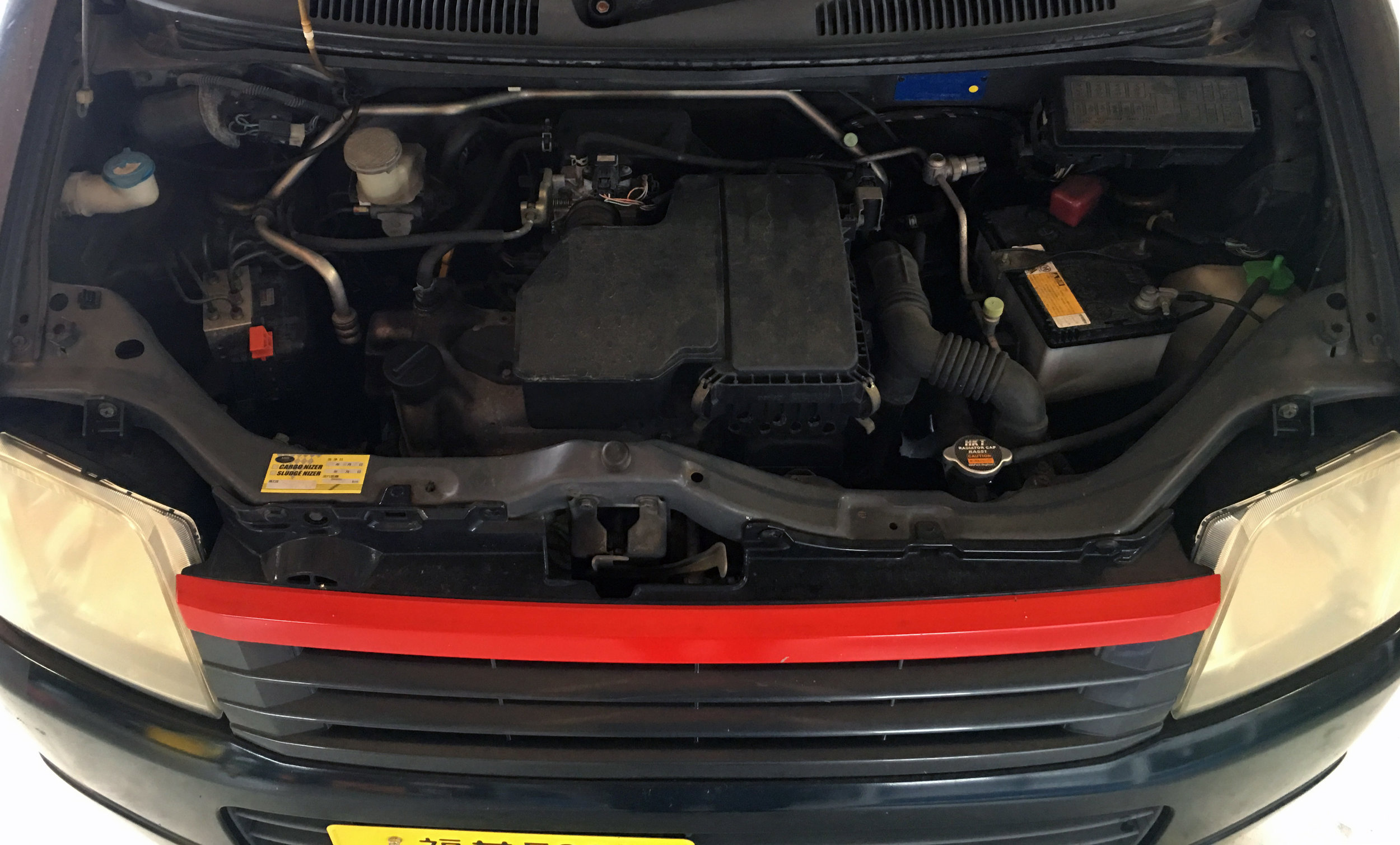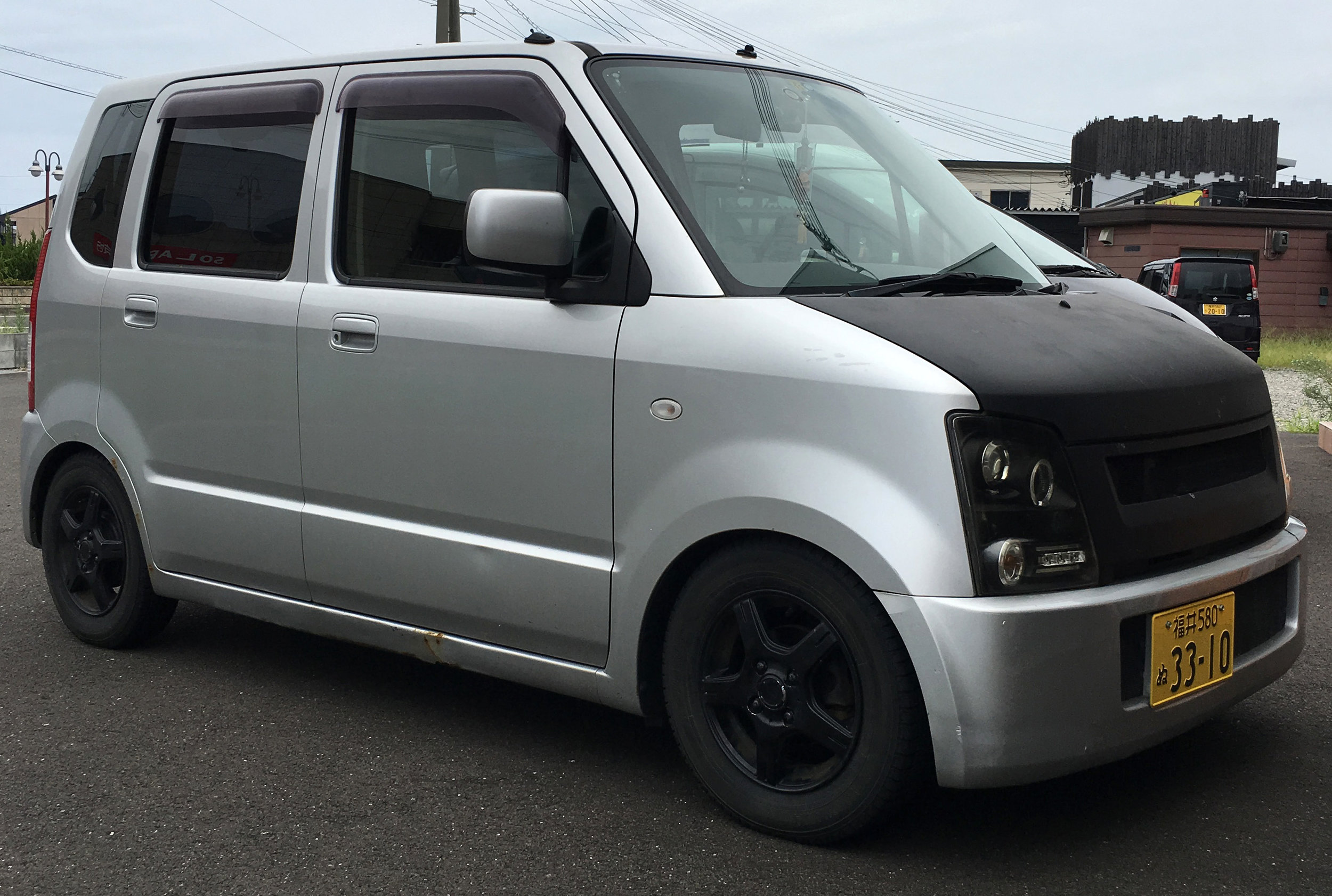[ Wagon R ] MC22 Review
This car was actually not what I had expected. While I knew the car would be a tall, boring, and slow, I had not expected the handling to be decently sharp (for a tall, small wheelbase kei car) and the DOHC K6A engine was actually more than adequate for scooting around town. I could drive it with a tiny bit of joy up a few mountain paths if I pushed the car aggressively and applied generous throttle on second gear. Let’s be honest here, the car is not, by any stretch of the imagination, a sporty car, but what it lacked in performance it offered in interior comforts and practicality.
Suzuki Wagon Rs are probably the most ubiquitous, common passenger kei car found in Japan. With a name plate stretching back 25 years, the Wagon R has, for a long time, been the most popular seller due to its ample interior space and great design. This 2001 Wagon R is the second generation of the car, though by some mechanical components, exterior appearance, and some interior design elements, it is largely similar to the first gen.
Interior
Being the best feature of the Wagon R, I’m going to talk about the interior first. Obviously dated and simplistic, even when it was new, the dash is plain, grey plastic all around with no soft-touch panels, though the surfaces seem quite durable. The seats are a neutral grey pattern as well, with functional, flat seats. The interior dials and gauges are made with functionality in mind… at least it has air-conditioning. Overall, the car seems like many budget-focused cars of the late 90s era and is an acceptable place to soak up many kilometers (miles, if you prefer) of travel.
With plenty of cubbies under the front dash and side pockets, as well as under both the driver’s and passenger’s seats, there are plenty of places to hide some snacks for long road trips or shopping around town.
Don’t worry; I’m getting to the best feature: the seats are amazing. Honda calls their version found in the Fit “Magic Seats,” and you’ll see how Suzuki did it first and why they are considered quite “magical.”
First off, the rear seats recline to several low degrees. That means the rear passengers can enjoy leaning back on long trips, with more than enough head and legroom for me at 182cm (about 6’).
Secondly, all the seats combine to fold nearly completely flat (obviously the driver’s seat notwithstanding), offering a very large surface area for larger objects. With the fold flat front and the reclining rear, I have slept in my car quite comfortably on several occasions. Great for camping for one.
While I’m not sure the first generation R or many other kei cars of this era offered this amazing functionality, the later models surely all incorporate these details. (Okay, in all fairness, I know the Fit has one more trick up its magic sleeve, but c’mon, this is a cheaper and older car.)
Exterior
The exterior of the car is… well, plain, to state it simply. There is little shape and notable lines other than the front and the rear bumpers. The hood has two minor creases and the sides have one long crease for strength and appearance, but otherwise there are no special notable design elements. Everything is done in the 90s ideal of simple, cheap, and affordable mobility. And it shows.
(The red stripe on the front bumper was painted last year, as it was originally a faded chrome color.)
Engine / Drivetrain
There are primarily two variants of the MC11/MC22 Wagon R: naturally-aspirated and turbo-charged. This NA model has the newer DOHC K6A engine with 53 HP. Other Wagon Rs of this generation may have a SOHC 51 HP F6A or Wagon RRs may have a turbo-charged, intercooled 63 HP K6A.
With only around 800 kg (1763 lbs) to push around, the car accelerates reasonably around Japanese roads, as speed limits around here typically vary 30 - 80 kph (18 - 50 mph). At those speeds, this little box can keep up decently well, but expect 0-100 kph (0-62 mph) to take around 13 seconds. Fast should be the last thing on your mind.
The 5-speed manual gearbox on this car, a relative rarity, shifts surprisingly smoothly, with reasonably short throws. It is a bit vague until you get used to the shifting feel, however. But having a manual transmission means the car will not be constantly hunting for the right gear uphill and you can always be in the right powerband. Having also driven the same car with a 4-speed automatic transmission, the auto box definitely felt weaker, but was fine for most commutes.
Driving
The drive, however, honestly surprised me quite a bit. Coming from driving a nimble Alto Works, I still found the steering feel of the Wagon R to definitely be on the above-average for kei car side of things. It was much sharper and more apt to turn in than the lazy econobox feel of the car should have. In fact, it is much better than other generations of the Wagon Rs I have driven. This is not to say you should expect a fun time driving the twisties with it, as the tall ride makes the car feel it wants to fall over in a sharp corner. To be fair, I drove it pretty hard. Most drivers probably won’t have any such aspirations.
Conclusion
At the current used price market of around 150,000¥ to 250,000¥ ($1350 to $2350 USD) with 2 years of shaken registration, the car is a relative bargain. The general reliability, functionality, and practicality make the car an easy choice for commuters.
I don’t regret buying the car (the first time), as it took me to several distant prefectures in comfort and convenience. After driving my Wagon R for 11 months, I came across a potential buyer through word-of-mouth, a guy who was happy to drive a manual transmission kei car: a character of increasing rarity. Off it went on dutiful service for 11 months before it came boomeranging back to me. What goes around, comes around.





























